Love him or hate him, James MacDonald is one thing for sure: A larger-than-life symbol of the stress and perils of leading a gigachurch — a role he now believes is impossible.
Among evangelical pastors, MacDonald is both revered and reviled. Once a model for how to grow a huge church from scratch, he was fired by the very church he nurtured and now faces legal challenges, accusations of improper spending and bullying and more.
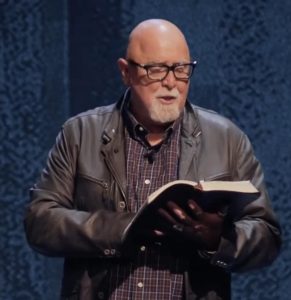
James MacDonald
From his vantage point, whatever has gone wrong — and he admits plenty has gone very wrong — was hastened by the impossible expectations of the kind of pastoral life he once led.
In addition to planting and growing Harvest Bible Chapel in suburban Chicago, he became an A-list conference speaker, church planting guru, best-selling author and TV host. His influence extended into the Southern Baptist Convention, the nation’s largest non-Catholic denomination. In the past two decades, he has spoken at the SBC Pastors’ Conference six times.
Amid the controversies seemingly engulfing him, MacDonald granted an exclusive interview to Baptist News Global — an hour-long conversation that was both confessional and confused.
He considers himself a broken man, struggling to make sense of the world he once preached about with certainty.
He considers himself a broken man, struggling to make sense of the world he once preached about with certainty.
He’s disconnected now from his former life leading a church staff of 500 and a TV show with a staff of 50. He’s not invited to speak at conferences, and he’s not giving advice to anyone. Instead, the counselor has become the counselee.
“According to counselors I’ve been to, I’ve been diagnosed as having symptoms of PTSD,” he said. “I’ve done a lot of counseling with Henry Cloud, and he’s helped me understand two very important sentences. … The first one is first they idolize you. And then they demonize you.”

Thirtieth anniverary event for Harvest Bible Chapel.
In the beginning
MacDonald was just another church planter in 1988 when he and his wife started Harvest Bible Chapel with 18 people. This was the beginning of a new era of church planting emphasis among evangelical churches.
He turned out to be very good at growing a church.
“We spent the first seven years meeting in a high school,” MacDonald recalled. “We got our first facility in 1995, and we bought a 100,000-square-foot warehouse that seemed to be more than enough. Before the next seven years went by, we were growing by a thousand people a year and baptizing 800 to a thousand adults a year.”
Those were the good days. And looking back, those were the days the pastor believes he was able to fulfill his spiritual calling most truly.

Kathy and James MacDonald
But with numerical success comes more demands on a pastor’s time. The layers of responsibility began to take a toll on his life, and he was too close to see it at first, he said. The result was he became emotionally unhealthy.
“I was never that motivated by the size of the church. More people meant more work, more pressure for staff, more everything,” he explained. “I wish I had done some things to curtail the growth in 2000. We started planting churches. I had a vision to plant 10 churches in 10 years; we planted 60 and sent more than 3,000 people away from our church. But our church just kept growing anyway. The more we sent away, the more came.
“I had a K-12 Christian school, and I had a worldwide church planting ministry. I’d written 15 books. I had a congregation of real attendance of 13,000 to 14,000 every week. You know, not at Easter. We had 31,000 people at Easter my last year I was there.
“It was way, way, way too much.”
“It was way, way, way too much. And so, the two big tensions I was dealing with in the last 10 years was I just saw how size was mitigating against discipleship in me. I’m not ascribing that to anyone else. It’s not a universal principle. But, you know, I had signs all over the church, not a quantity of disciples, but a quality of discipleship. The problem was, we were really struggling with quality of discipleship.
“’Doesn’t matter how good the sermon was last week, you know, it needs to be better this week because we’re bringing our friends,’ members would say to me. I have a massive term paper due by Friday that’s not only going to be reviewed by all the congregants with a high expectation, but it’s going to be broadcast around the world. It was, way, way too much.”
What MacDonald experienced on the inside as “too much” appeared to those outside as a megachurch pastor losing control.
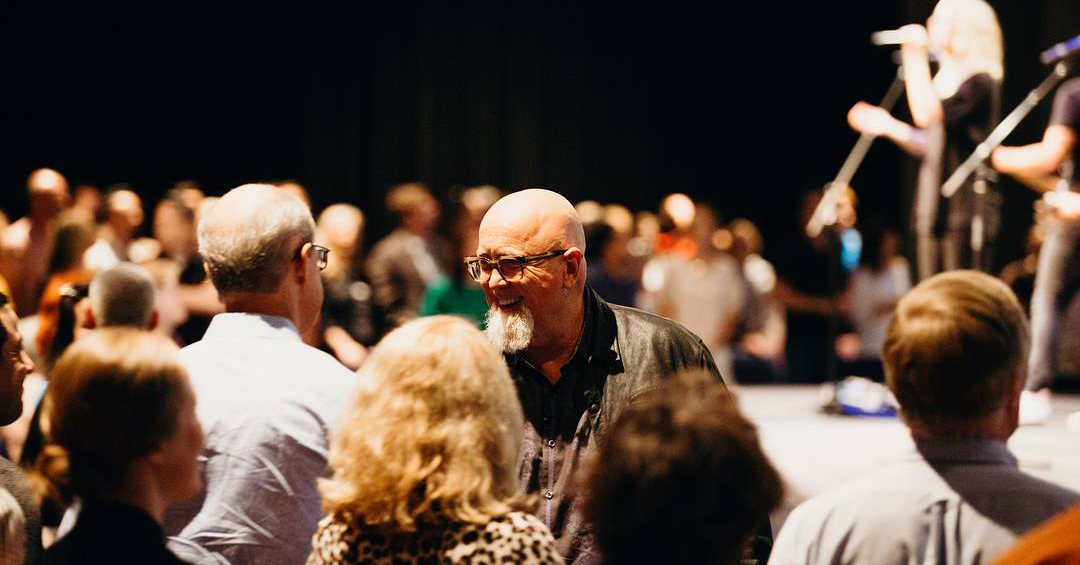
James McDonald at Harvest Bible Chapel
The fall
In a story of almost biblical proportions, trouble has followed MacDonald intensely for nearly a decade. In 2019, he was fired from Harvest Chapel and “disqualified for ministry” due to what church leaders called a “substantial pattern of sinful behavior.”
Much of that appears related to the pastor’s confrontational leadership style, by the accounts of others. From MacDonald’s perspective, he was sidelined by jealousy and infighting in a complex organization that was unsustainable and where someone had to take the fall.
Mixed in with that was a major controversy over spending and borrowing for construction that was not reported to the congregation.
As if to put some icing on an already troubled cake, MacDonald was arrested in Coronado, Calif., March 22 and charged with “assault by means likely to produce great bodily injury” and battery with serious bodily injury.
Those charges, which could carry a prison term of up to seven years if he were convicted, stem from an incident in which MacDonald was parking his vehicle and hit another vehicle in an adjacent spot. A police report alleged the pastor “jumped out of his truck and attacked the victim,” a 59-year-old woman. He disputes that description.
Throughout all these ordeals, MacDonald has faced an ongoing nemesis in the person of Julie Roys, publisher of The Roys Report, an independent website seeking to hold religious leaders accountable for bad behavior and expose scandal in the church.
At one point, MacDonald and the church sued Roys in an attempt to get her to stop writing about him. After the church fired MacDonald, it dropped the lawsuit and reimbursed Roys’ legal fees.
MacDonald believes Roys induced “mass hysteria” against him with relentless attacks.
MacDonald believes Roys induced “mass hysteria” against him with relentless attacks. “She wrote 85 articles about me in 2019,” he said.
The details of the history between MacDonald and Roys are lengthy and complicated. It is true that in the end, her writing did play a major role in MacDonald’s downfall.
But this is a story that also intersects some of the biggest names in evangelical Christianity — including Christianity Today, World magazine, Moody Bible College and a host of high-profile pastors. It intersects with The Gospel Coalition and Mark Driscoll and John McArthur and Al Mohler and Greg Laurie, T.D. Jakes and many, many others.
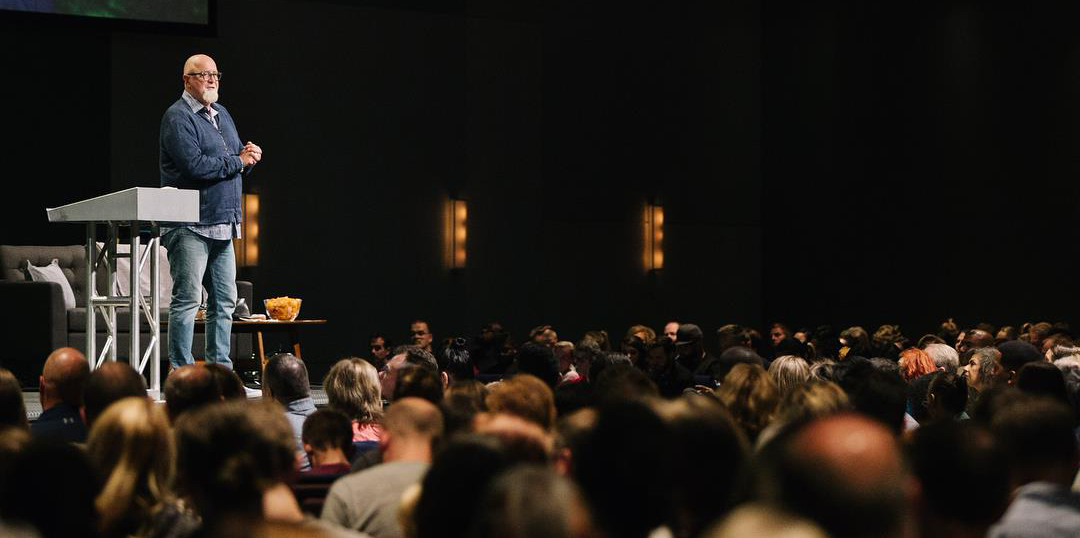
James MacDonald preaching at Harvest Bible Chapel
Always conflict
Although it was easy to overlook for many years, conflict has followed MacDonald from the beginning. By his account, that just goes with the territory of being a pastor and church planter.
“We went through the same early growth things that most churches grow through,” he said. Twelve of the 18 people we started the church with left. We grew to about 400 people in the first two years, and then 12 of the 18 people left in a huff. They wanted me to tell people they couldn’t raise their hands in worship. They wanted me to give a very baptistic gospel invitation every Sunday.”
Over time, those common problems multiplied as the church grew and MacDonald, by his own assessment, did not always respond well.
“By the time we got to the 20th anniversary, I was under attack from former staff members, and elders, and then the construction problems. I was in a defensive posture. … By the time we got to the 25th anniversary, there was a full-scale, online, nonstop assault on my leadership, on my character, on every decision we made.”
Looking back, he wishes he had left when he was at the peak.
“I should have left the church the day I got back and ended on a good run.”
“I wrote the book Vertical Church in 2012, and I went on a 40-city bus tour to pretty much every major city in America. We had about 90,000 people attend those events. I should have left the church the day I got back and ended on a good run,” he said.
Instead, he kept plugging along with the long days and demands of leading an enormous enterprise no one learns about in seminary.
“I was struggling with the complexity of the job and how to be a CEO-type manager,” he said. “Contrary to popular opinion, in 2018 we were finally, after about three years of trying, we were named to the Best Christian Work Place.”
“I really was wrestling with what large-church organizational leadership was doing to my pastoral role. I went into ministry because I loved people, and God had done something significant in my life, and I wanted to see that hopefully reproduced in the lives of others.”
“I went into ministry because I loved people, and God had done something significant in my life.”
One of the big tipping points was accusations of financial mismanagement, particularly a significant debt load he and the elders chose not to disclose to the congregation.
“We did make a mistake when the church got into all that debt,” he reflected. “The elders discussed it, and they decided not to tell the congregation. We didn’t have any congregational budget approval. We felt it was our responsibility that we did it. We put a plan in place to pay it down. We were paying down our mortgage at twice the lender’s expectation. And we didn’t feel that we needed to disclose that or burden the church with it. That wasn’t the way our church worked.
“But, you know, some people found out about it. And so, they launched this website against me called the Elephant’s Debt.” That name was a play on the title of a series of live video conversations with influential pastors hosted by MacDonald under the title The Elephant Room.
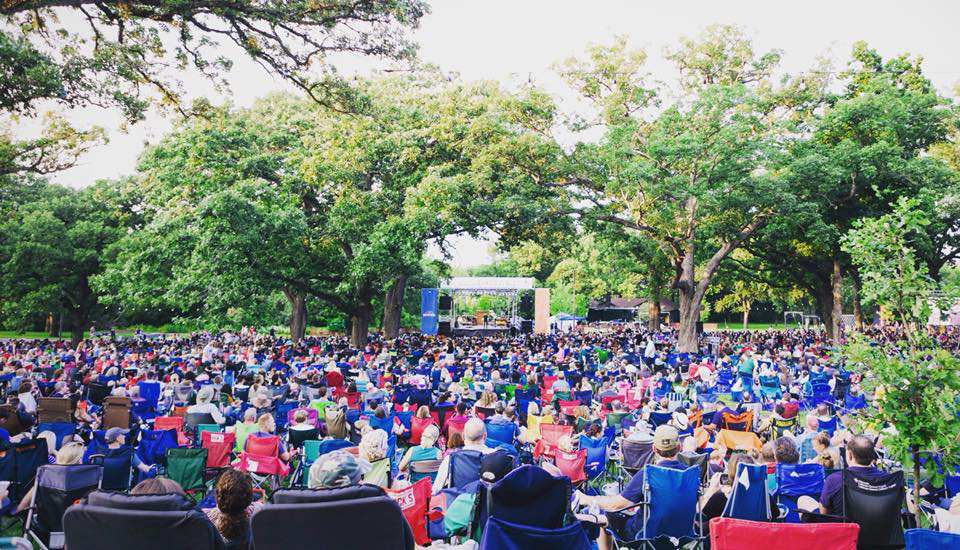
A summer 2018 outdoor revival with Harvest Bible Chapel
How to get off the ship
At some point, MacDonald knew he was drowning but couldn’t figure out how to get off the ship.
“I would say by 2015 and 2016, I was in some pretty serious decline,” he said. “I was trying to resign. I would say regularly in elder meetings, ‘I’m not doing good, this is too much for me.’ But, you know, I was the rainmaker, and they were very reluctant to let me go. And in 2017, I went to a ministry recovery center in Edmonds, Wash., and I was there for a month. I shouldn’t have come back. I should have stayed out for at least a year right then, but, you know, there’s all this pressure and everything like that. So I came back Nov. 1, 2017, and I was gone from the church about 15 months later.”
There were warning signs along the way, but it was only when the series of things boiled over that the pastor on a pedestal fell hard.
There were warning signs along the way, but it was only when the series of things boiled over that the pastor on a pedestal fell hard.
The building debt, questions about church finances, disgruntled staff and lay leaders, accusations of bullying and authoritarian leadership, a hot mic that caught him joking — he says — about placing child porn on the computer of a nemesis, internal church fights, jealousy, and on and on.
“All this broke me down, broke me down, broke me down to where I’m just like, I cry every day,” he said. “I can’t take anything. … My threat response is completely trashed. I have no ability. If somebody brushes past me in the mall, I have to literally stop and make myself know that’s not the same as someone drawing a gun on me.”
San Diego
And in that condition, he attempted to parallel park his truck in San Diego.
“I barely touched the lady in front of me. She jumped out of her car and came running at me. And I was so startled that I jumped out of my car and didn’t even put it in park,” he said. “And it rolled into the person behind me, and I reached toward this lady. … And what I think we’ve been able to piece together, there isn’t a video, but I think I blacked out and I fell. The reason I know is because I fell to the ground. I never put my hands underneath me.”
The pastor’s arrest made national headlines, especially in the online spaces dedicated to covering clergy scandals and allegations of abuse.
No current information is available online from the San Diego County Court where MacDonald’s case is to be heard.
For now, the pastor who once preached to tens of thousands speaks to a few dozen listeners most weeks.
“Every Saturday night, I preach my heart out to 40 or 50 addicts and their family members in a garage next to the house where we have our first sobriety house,” he said. “We call the property Rock Bottom because that’s where I’ve been and that’s where these men are. And I’m so happy in it. And that’s the good thing that’s going on.”
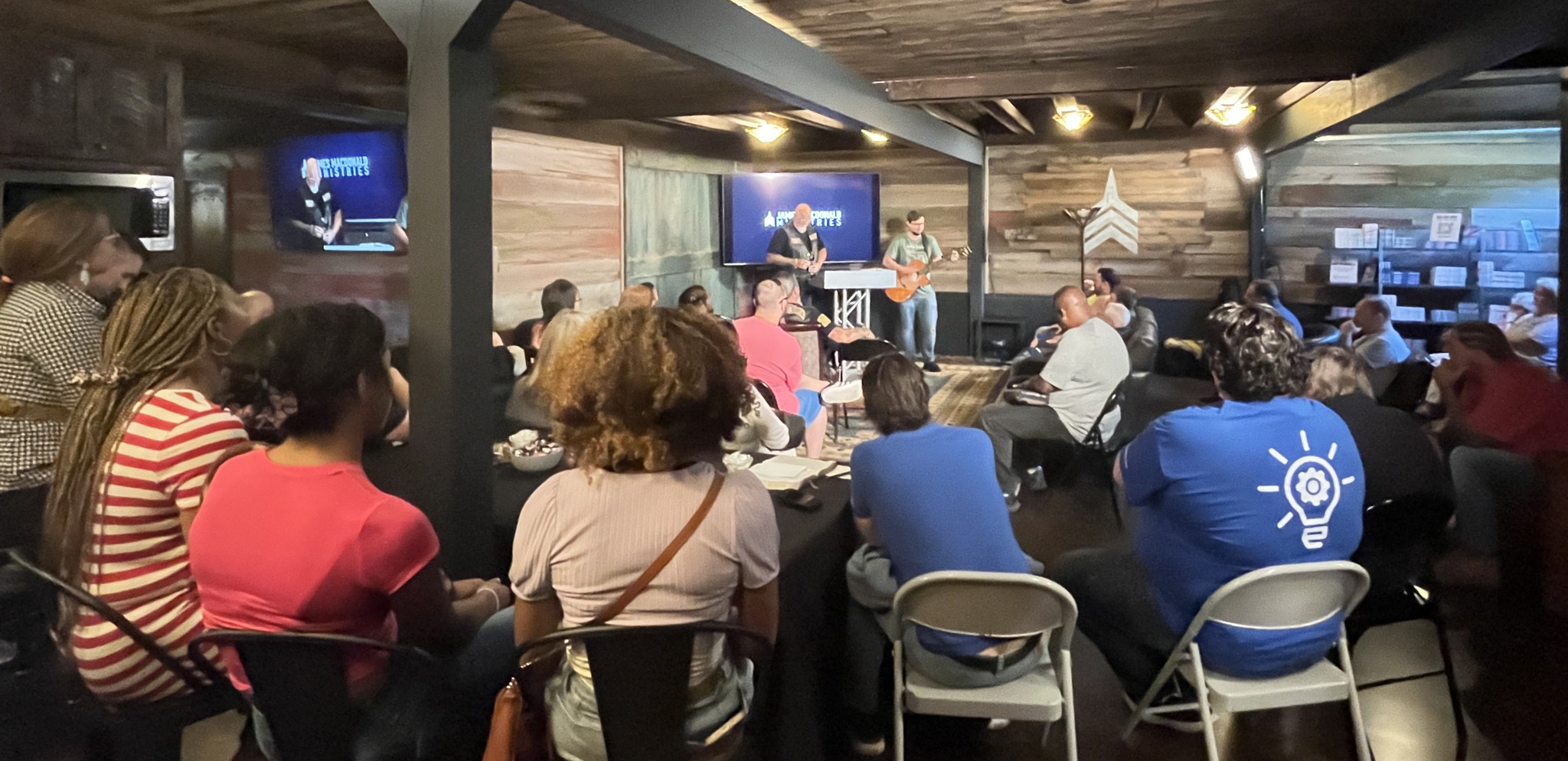
James MacDonald at Rock Bottom worship


